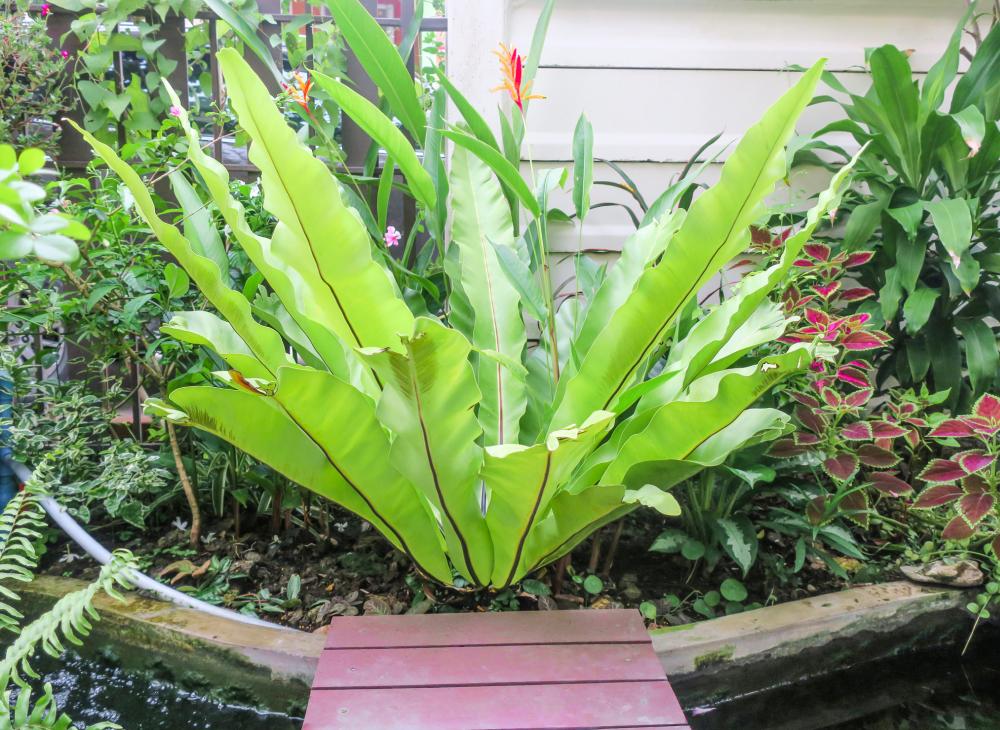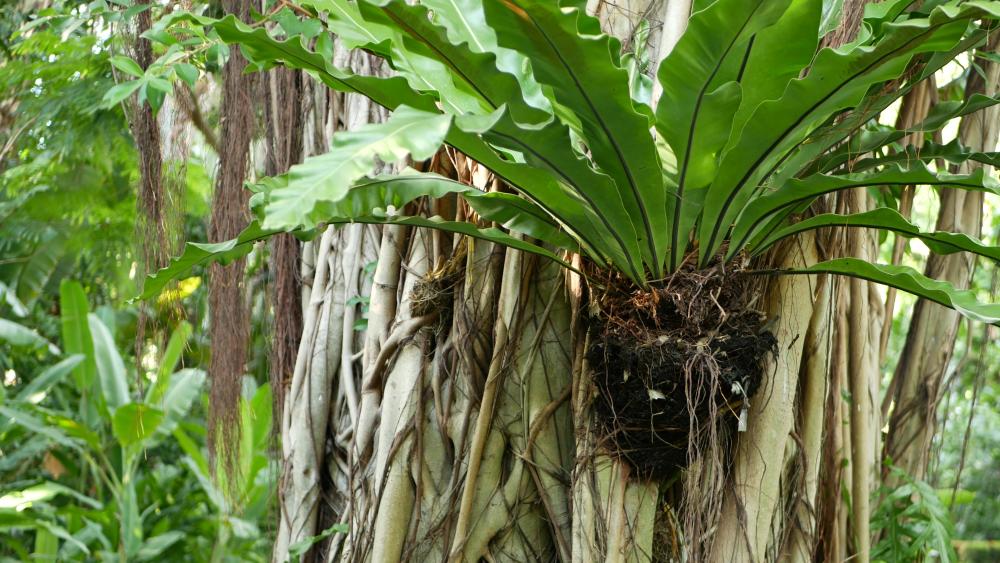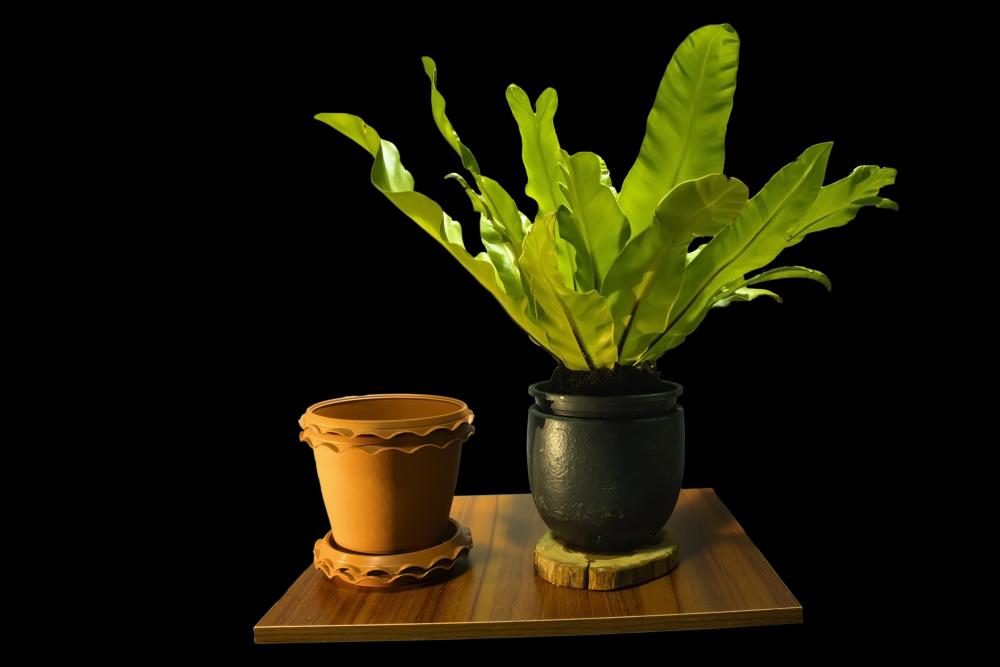Bird’s Nest Fern Care – How To Grow And Care For Bird’s Nest Fern
Of all the ferns you can grow at home, bird’s nest fern always has a special place in your heart. For many fern lovers, the reason they started a tropical fern garden is this special fern. At first glance, it doesn’t look like it’s any different from the hundreds of other fern species out there. But as you get to know and care for the bird’s nest fern, you’ll learn to appreciate it more than the others.
For one thing, it thrives in cooler temperatures and filtered light more than other ferns that require tropical-like conditions and high humidity levels. It also has a high resistance to diseases and looks fresh and elegant all year round even when under stress. In short, it takes a lot to put a dent in this fern’s beauty and cheerful demeanor. If you forget to water it sometimes, that’s no problem. If nutrients get scarce in the soil, the plant will not complain. So what more can one ask of a houseplant that stays lush green all year round?
Bird’s Nest Fern At a Glance
A native of Africa and Asia, the bird’s nest fern (Asplenium nidus) is a member of the Aspleniaceae family. It sometimes goes by the name nest fern just for simplicity. But whatever you like to call it, this fern is one of the easiest ferns to grow and enjoy at home.
It has glossy leaves that shimmer in the light and brighten the place. Those leaves are accountable for the peculiar name of the plant. Arranged in a large and showy circle, the bright leaves look like a bird’s nest.
Their availability, low cost, and low maintenance all contribute to the popularity of this fern as a houseplant. However, they still need more humidity than is usually available in the air of the living room. So you can easily install them in the bathroom or kitchen and let them thrive. If you want to keep them in other places in the house, you will need to mist them about once or twice a week during the hot summer months.
Another way to grow this undemanding fern is to plant it in a terrarium or even in a bottle full of water. This will cut down even more on the amount of maintenance and care you give the plant and solves the issue of low humidity at once.
The size of the mature plant varies depending on the variety and growing conditions. If you grow it in a pot, it can reach anything from 3 to 5 feet tall and spread 2 to 3 feet across. In a terrarium, the plant will stay compact and might not reach 3 feet tall. It still will only grow in zones 11 and 12, where the high temperatures and humidity levels mimic the original habitat of the fern. However, you can still provide similar growing conditions even in cooler zones without any issues.
Bird’s Nest Fern Varieties
While the bird’s nest fern has no problem growing on tree trunks, mossy rocks, or in the deep forests in the tropical parts of Africa, Australia, and Asia, that doesn’t mean that all varieties will grow well at your home. So to save yourself a lot of trouble and to ensure that the fern will thrive as a houseplant, choose the right variety for your weather and growing conditions. Here are some varieties to consider.
- Asplenium antiquum: Also known as Tani-watari, it’s native to Asia where it grows just about anywhere there’s vegetation. However, due to urban development, the plant is categorized as critical. You can still find it in your local nursery. It has leaves like blades and grows to about 3 feet tall on average. The ornamental leaves are light green with ripples running along both edges.
- Asplenium australasicum: This variety is native to Australia and is the closest of all the species to the term “bird’s nest”. The leaves grow upright in a tight circle leaving the middle almost empty. The ripples on the edges of leaves are more compact and the tip of the leaf curls inwards upon itself. While it is grown as an ornamental plant in Australia, in other parts of the world its leaves make a good soup.
- Asplenium serratum: This variety is native to Latin American and the southeastern parts of the United States. It grows mainly in Florida where it’s considered an endangered species due to loss of natural habitat. It has dark green leaves with larger wrinkles around the edges than other ferns in this family.
How to Grow Bird’s Nest Fern
One of the advantages of growing a bird’s nest fern as a houseplant is that you can either grow it in a water medium or as a regular potted plant in the soil or potting mix. That gives you plenty of leeway when it comes to starting and maintaining the plant. While growing it in a terrarium will make misting the plant redundant, it can have its own set of complexities as well. So here, we’ll focus on starting the fern in soil.
- Choose a medium-size pot made of terracotta with plenty of drain holes at the bottom.
- Fill the pot with a general-purpose potting mix or you can make one at home by mixing sand or perlite with regular garden soil at a ratio of 1:1. You can also add shredded bark to improve drainage.
- Dig a hole in the pot as deep as the root ball of the sapling and a few inches wider.
- Ease the fern out of the wrapping it came in and examine the roots. Trim off damaged roots and ruffle them to get them disentangled.
- Plant the sapling in the hole and spread the roots out to fill up the hole.
- Backfill the hole with the potting mix and firm it to ensure that the sapling is standing upright on its own.
- Water the pot thoroughly until excess water flows out of the drainage holes. This helps the soil settle.
- Place the pot on a window sill facing the north or east that gets filtered light. Keep the soil moist throughout the growing season.
Bird’s Nest Fern Care
Bird’s nest fern care varies wildly depending not just on the variety of the fern but also on how you chose to grow it. A fern growing in a terrarium will have different maintenance routines than one growing in a pot. And if you grow it in the garden, you will have to make sure the plant is getting just the right amounts of light, water, and humidity. Since garden ferns are the hardest to care for and most demanding, we’ll devote this section to that specific way to grow the bird’s nest fern.
Soil
If you live in zones 11 or 12, you can easily plant the bird’s nest fern in your garden directly and not worry about the humidity or temperature the plant gets. However, that would require your extra attention to the soil the fern is growing in. Either loamy or sandy soil will serve the plant’s needs for loose, well-drained, and rich soil. You’ll need to amend the soil with perlite or coarse sand to achieve the right texture. As for the soil pH, it should be more acidic than neutral. You can increase the acidity naturally by adding plenty of organic materials and mulching around the fern. When the bacteria break down the organic materials, it improves the acidity of the soil.
Water
It’s crucial for the bird’s nest fern to have moist soil throughout the spring and summer. This can be easy to achieve in a terrarium or even for a potted plant. But out in the garden, the soil’s moisture can fluctuate depending on many factors. The texture of the soil, the temperature of the air, and how high or low the humidity is. So while it’s easy to say that the fern needs about one inch of water per week during the growing season, you also need to factor in the impact of the elements. But a guiding rule is to let the top two one inch of the soil to dry out between irrigations. This fern can handle drought better than it can deal with soggy soil. So don’t overwater it since that could lead to root rot.
Fertilizer
While not exactly a heavy feeder, the bird’s nest fern still needs the basic minimum of nutrients to be present in the growing medium. One way to provide that basic minimum is to feed the plant with a balanced liquid fertilizer. You can still side dress it with compost and aged manure if it’s growing in the garden. But in most cases, the liquid fertilizer will do just fine wherever you choose to grow the fern. Apply the fertilizer once a month in the spring and summer and cut back completely on feeding during the fall and winter.
Repotting
Repotting is a concern only when you grow the bird’s nest fern as a potted houseplant. But even then, the fern doesn’t require regular repotting even for a perennial plant. For one thing, the roots of the fern are rather compact and slow to grow. In fact, once the plant matures, the root system rarely grows an inch longer. What this means to you is that you won’t have to repot the potted fern often unless the plant has root rot or the potting mix becomes contaminated. In that case, repot the fern in a slightly bigger pot with a lot of drainage holes and fill it up with fresh potting mix.
Humidity
Humidity is another factor to worry about if either you are growing the bird’s nest fern in zones below 11 or you keep it as a houseplant. In most cases, the potted plant can survive in normal humidity levels found in the average home. However, if you want your fern not just to survive but to thrive as well and display its green leaves in all their splendor, then the humidity will be your number one priority. Mist the fern about once or twice a week during the spring and summer to keep it cozy. If the fern is growing in the kitchen or bathroom, it will have enough humidity that renders misting redundant.
Pests and Diseases
In general, the bird’s nest fern has no natural enemies and most pests that you find in the garden will have little impact on the plant’s growth. Aphids, scale, and spidery mites are easy to get rid of with neem oil spray or rubbing alcohol.
As for diseases, the two most common health issues for the fern are brown tips and the leaves turning yellow. Usually, the fern has a low tolerance to cold drafts and this will display as brown edges alongside the leaves. Shelter the plant from cold winds and direct sunlight in the afternoon. Too much sun will often cause the leaves to turn yellow.


